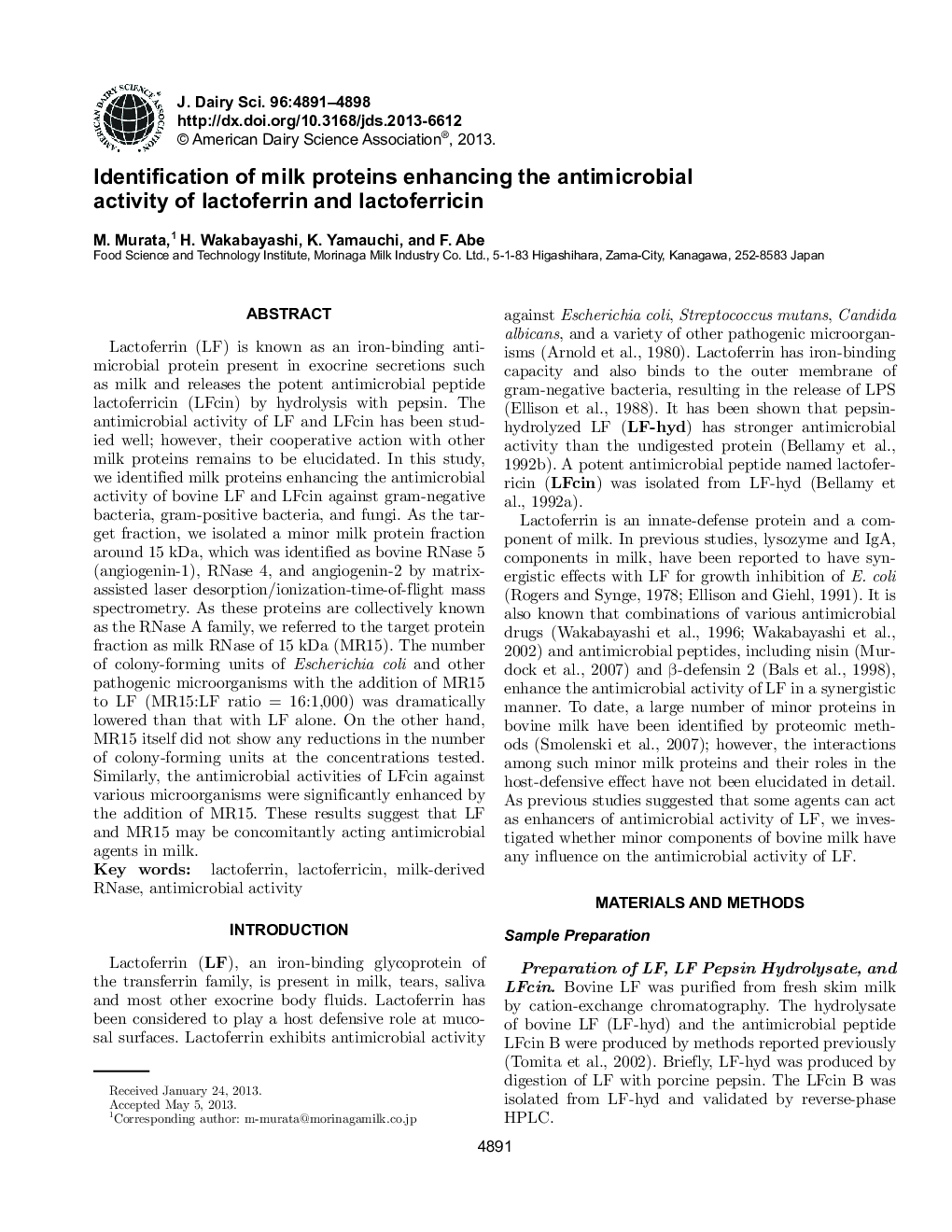| Article ID | Journal | Published Year | Pages | File Type |
|---|---|---|---|---|
| 2438869 | Journal of Dairy Science | 2013 | 8 Pages |
Abstract
Lactoferrin (LF) is known as an iron-binding antimicrobial protein present in exocrine secretions such as milk and releases the potent antimicrobial peptide lactoferricin (LFcin) by hydrolysis with pepsin. The antimicrobial activity of LF and LFcin has been studied well; however, their cooperative action with other milk proteins remains to be elucidated. In this study, we identified milk proteins enhancing the antimicrobial activity of bovine LF and LFcin against gram-negative bacteria, gram-positive bacteria, and fungi. As the target fraction, we isolated a minor milk protein fraction around 15 kDa, which was identified as bovine RNase 5 (angiogenin-1), RNase 4, and angiogenin-2 by matrix-assisted laser desorption/ionization-time-of-flight mass spectrometry. As these proteins are collectively known as the RNase A family, we referred to the target protein fraction as milk RNase of 15 kDa (MR15). The number of colony-forming units of Escherichia coli and other pathogenic microorganisms with the addition of MR15 to LF (MR15:LF ratio = 16:1,000) was dramatically lowered than that with LF alone. On the other hand, MR15 itself did not show any reductions in the number of colony-forming units at the concentrations tested. Similarly, the antimicrobial activities of LFcin against various microorganisms were significantly enhanced by the addition of MR15. These results suggest that LF and MR15 may be concomitantly acting antimicrobial agents in milk.
Related Topics
Life Sciences
Agricultural and Biological Sciences
Animal Science and Zoology
Authors
M. Murata, H. Wakabayashi, K. Yamauchi, F. Abe,
